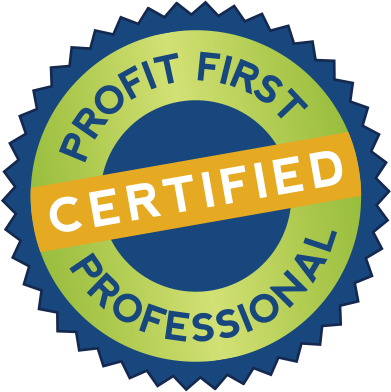What is the Profit First method?
Profit First is an accounting method that focuses on increasing profit, rather than simply growing revenue. The idea is that by focusing on profit first, companies will be more sustainable and profitable in the long term.
How Does the Profit First Method Work?
The profit first method is a simple but effective way to ensure that your business is profitable.
It involves setting aside a percentage of your revenue each month to cover expenses and reinvest in the industry.
This method can help you to overcome the urge to spend money as soon as it comes in, and it can also help you to save for unexpected costs. In addition, it can allow you to monitor progress and make adjustments to your budget if necessary.
If you’re looking for a way to improve your bottom line, the profit first method is definitely worth considering.
How to Implement the Profit First Method
To implement the profit first method, you must divide your income into three categories: profit, taxes, and expenses. Then, you allocate your income according to these percentages.
For instance, if you want to aim for a profit margin of 10%, you would put 10% of your income into your profit account and the remaining 90% into your taxes and expenses account. This simple system can help you to quickly see whether or not your business is on track to becoming profitable.
Key concepts of the Profit First Method
There are 3 key concepts to remember when talking about Profit First:
– Allocating a percentage of revenue to profit each month/quarter/year.
This system helps business owners ensure that they are taking care of their profit needs first, before using any remaining revenue to reinvest back into the business or cover operating costs. The reason this is important is that it ensures that the business is always generating positive cash flow, which is essential for long-term sustainability and growth.
Additionally, this system can help business owners avoid the common mistake of reinvesting all of their profits back into the business, which can lead to cash flow problems.
– Automatically transfer this profit to a separate bank account.
Doing this ensures that you are always aware of your current profit situation and provides you with the motivation to continue growing your business.
It also allows you to easily reinvest any profits back into the business, without having to worry about where the money will come from.
Additionally, by keeping your profit in a separate account, you are less likely to be tempted to spend it on non-business-related expenses.
– Prioritizing profit over growth
Many businesses focus on growth first and foremost, but this can often lead to financial instability and even collapse.
By focusing on profit first, businesses can ensure that they are financially healthy and can sustain themselves in the long run.
This doesn’t mean that businesses should never grow – rather, they should make sure that any growth is profitable and doesn’t put the business at risk.
PROS
There are several pros to the Profit First method.
One is that it forces businesses to focus on profitability from the outset. This can be a helpful mindset shift for business owners who may be more accustomed to focusing on revenue growth.
Additionally, the Profit First system creates a built-in buffer against lean times by ensuring that there is always money set aside in the profit account.
This can allow businesses to become more sustainable and profitable in the long term and can help businesses better manage their cash flow, as allocating a specific amount of profit each month can help businesses plan for expenses and avoid overspending.
CONS
There are also some potential drawbacks to using the Profit First method.
One is that it can be inflexible and may not work well for businesses with irregular income streams.
Second, it can be difficult to allocate a specific percentage of profit each month, as revenue can fluctuate.
Additionally, since this fixed percentage of revenue is funneled into the profit account each month, businesses may find themselves with insufficient funds to cover unexpected expenses or opportunities.
Terminology
Let’s now get deeper into three main terms:
- Profit: profit is the value that a business owner receives from selling goods or services. This value can be in the form of cash, equity, or other assets. It is essential for businesses to generate profit in order to be successful. Without profit, businesses would slowly dwindle and eventually fail, this means that businesses make a profit by providing goods or services that people want or need and ensuring their long-term success.
- Taxes: the profit a company generates is not entirely it’s own. A portion of it goes to the government in the form of taxes. The government uses these taxes to fund public services and programs like infrastructure, education, and defense. There are different types of taxes, and they can be levied on individuals, businesses, or transactions. The most common type of tax is an income tax, which is based on the amount of money a person earns. Other types of taxes include sales tax, property tax, and estate tax.
- Expenses: An expense is an outgoing payment or the cost of doing something. In business, expenses are often divided into three categories: direct expenses, indirect expenses, and operating expenses. Direct expenses are those that can be easily linked to a specific product or service, such as the cost of materials or labour. Indirect expenses are those that are not directly related to any one product or service, such as rent or utilities. Operating expenses are the ongoing costs of running a business, such as marketing or administration.
Conclusion
Overall, the Profit First method is a good way for businesses to focus on profit and become more sustainable in the long term. However, it is important to make sure that you are able to allocate a consistent percentage of profit each month, and that you are willing to stick to the profit first mentality.
If you’re looking for a simple and effective way to make sure your business is profitable, the profit first method may be right for you. By allocating your income according to fixed percentages, you can quickly see whether or not your business is on track. Just remember to be realistic about your profit margins and disciplined about sticking to your allocations, and you’ll be well on your way to success.



